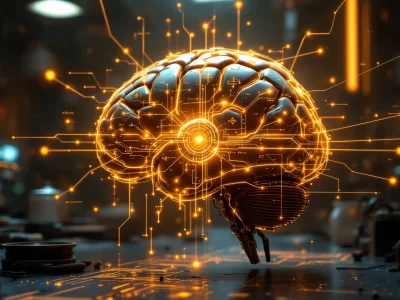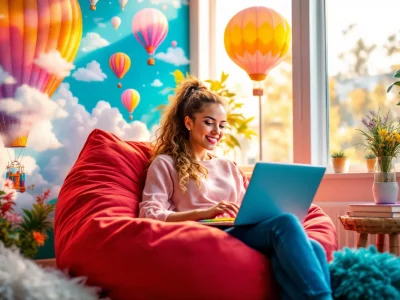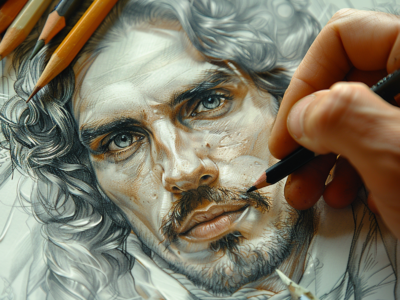The creative professions, long considered the last inviolable bastion against automation, now find themselves facing an unprecedented transformation with the latest advances in generative artificial intelligence in 2025.
Does this revolution herald the end of an era or the dawn of a new form of augmented human creativity?
The meteoric adoption of AI in the creative industries
The figures speak for themselves: 83% of creative professionals are now integrating generative AI into their daily work processes.
Graphic artists, copywriters, videographers, musicians – no creative field escapes this technological wave that transcends the traditional boundaries of innovation.
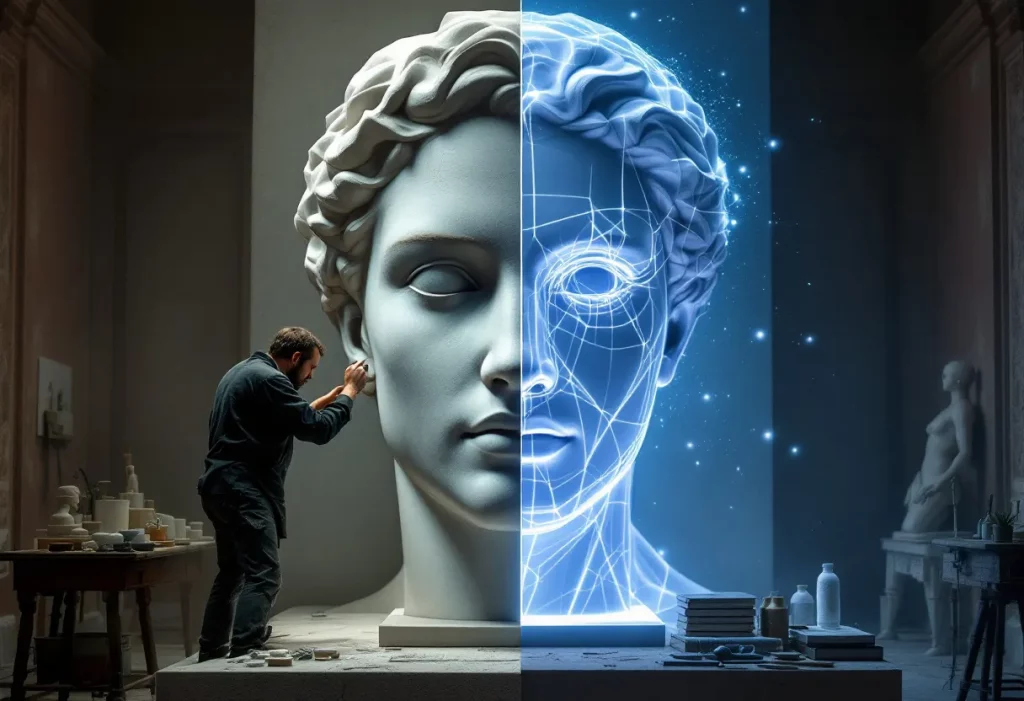
Studies in the MIT Sloan Management Review reveal a fascinating phenomenon: an average increase of 26% in creative abilities among regular users of AI tools.
This technology offers a new lease of life in the face of the dreaded “creative blocks” and makes it possible to overcome certain individual technical limitations.
“Generative AI doesn’t replace human creativity – it propels it into uncharted territory, eliminating the technical frictions that used to limit artistic expression.”
This mass adoption can also be explained by the democratization of tools: what once required years of technical training is now accessible via intuitive interfaces, allowing creatives to focus more on vision and artistic intent than technical execution.
Read our article on the best image generators in 2025: 10 best AI tools for image generation in 2025
Which tasks and which professions in the face of automation?
According to Goldman Sachs projections, generative AI could automate about 26% of tasks in the arts and design sector.
Tools like Midjourney or ChatGPT now produce professional-level content in just a few seconds.
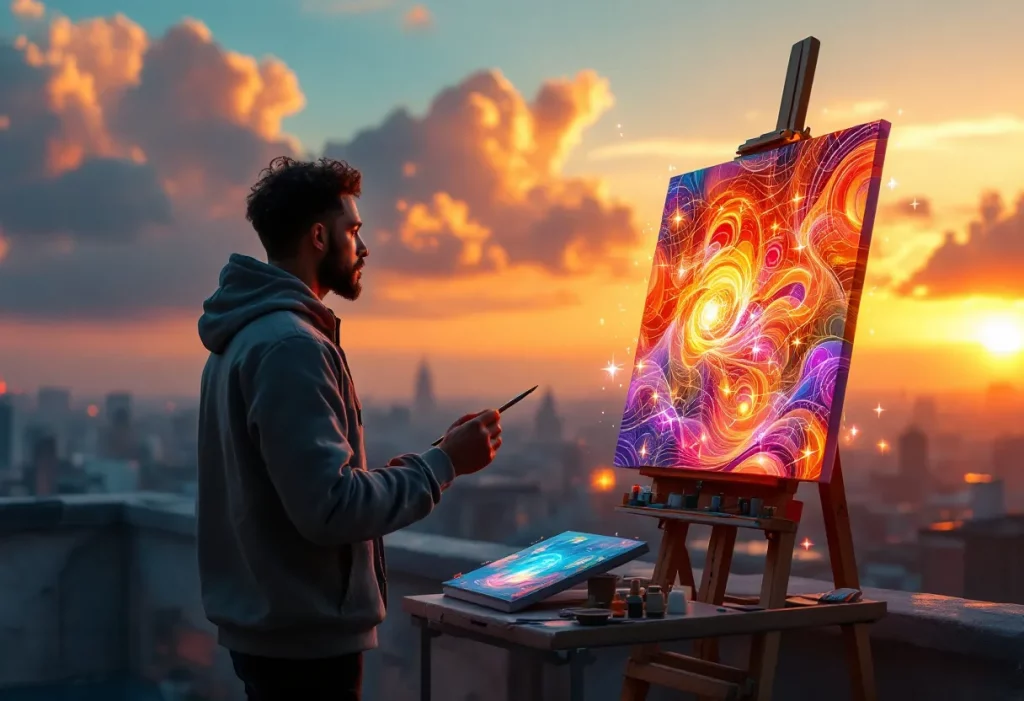
Tasks most vulnerable to automation include:
- The creation of standardized content (basic illustrations, SEO articles, formatted promotional videos)
- Photo retouching and video editing following preset templates
- The generation of multiple variations of the same concept
- Transcription, translation and adaptation of existing content
However, AI excels mainly at executing and generating ideas from very precise instructions (prompts).
It remains limited in its ability to really innovate or to understand the complex emotional and cultural nuances that make human creation so rich.
Extinction or mutation: what future for creatives?
While some pure execution functions are clearly under threat, many creative professions are evolving rather than disappearing.
The drawers and illustrators facing AI represent a particularly telling example of this ongoing transformation.
The irreplaceable human qualities remain critical thinking, emotional intelligence, conceptual originality and deep understanding of cultural and social contexts; all dimensions where AI is still showing its limits.
Among the new hybrid professions emerging:
- Prompt engineer: specialist able to formulate precise and creative instructions to get the best results from AI tools
- Augmented creative director: professional orchestrating collaboration between human and machine
- Curator AI: expert in selecting, refining and contextualizing generative productions
- Creative ethicist: guarantor of the authenticity and integrity of AI-enhanced works
“Tomorrow’s creative professions belong to those who know how to dialogue with AI, using it as an instrument rather than enduring it as a threat.”
The new opportunities of augmented creativity
The integration of AI into creative processes is opening up unprecedented perspectives that are redefining artistic and commercial possibilities:
- Freeing up creative time: by automating repetitive tasks, AI allows creatives to focus on conceptualization and artistic direction
- Democratization of creation: professional-quality productions become accessible to a wider audience, including small companies with limited budgets
- Rapid iteration: ability to rapidly test and refine multiple variations of a concept
- Large-scale personalization: creation of content tailored to very specific audience segments
Creative AI tools like Midjourney now make it possible to explore artistic directions that would previously have required weeks of work.
This acceleration is fundamentally transforming customer expectations and the economic dynamics of the creative sector.
Risks and challenges: Beyond technological euphoria
This revolution is not without raising important ethical, legal and qualitative questions:
- Copyright and intellectual property: AIs are trained on existing works, raising the question of recognition and remuneration of original creators
- Quality and reliability: “hallucination” phenomena where AI invents or distorts information
- Aesthetic standardization: risk of standardizing styles and impoverishing creative diversity
- Perceived devaluation: possible decrease in the value placed on creative work when AI can produce seemingly similar results
“The real threat is not that AI will replace creative people, but that it will lead us to underestimate what makes human creation truly valuable: its uniqueness, intentionality and depth.”
Adaptation strategies for creative professionals
In the face of this transformation, several approaches enable creatives to not only survive, but thrive:
- Become a hybrid expert: master both traditional creative fundamentals and cutting-edge AI tools
- Cultivating uniqueness: developing a distinctive style, voice or approach that AI can’t easily replicate
- Go for the creative direction: develop orchestration and supervision skills rather than pure execution
- Continuous training: staying constantly up to date with technological developments and their creative applications
- Value the process as much as the result: document and share the creative process, which becomes as important as the final work
Some forward-thinking companies are already offering retraining programs for their creative talent, directing them towards AI-enhanced supervisory, innovation and creative strategy roles.
Conclusion
Generative AI does not signal the end of the creative professions, but rather their profound metamorphosis. Just as the camera didn’t kill painting, but liberated it towards new forms of expression, AI could catalyze a creative renaissance by freeing artists and designers from technical constraints.
The future belongs to augmented creatives; those who will be able to harness AI as a new medium while preserving what makes human art irreplaceable: its authenticity, intention and ability to create deep emotional connections.
“Human creativity always finds its way. AI is just a new territory to explore, a new instrument to master in the infinite orchestra of artistic expression.”
In this redrawn landscape, the best creatives won’t be those who resist change, but those who embrace it while remaining firmly rooted in the core values of human expression.
FAQ
Will AI completely replace graphic designers and illustrators?
No, AI won’t replace these professions entirely, but it will transform their nature. Basic execution tasks will be automated, while the strategic, conceptual and emotional aspects of these professions will remain in the human domain. Designers and illustrators will have to evolve towards roles of creative direction and prompt engineering expertise.
What skills do you need to develop to remain creatively relevant in the AI era?
Most valuable skills include conceptual thinking, art direction, deep visual culture, the ability to formulate effective AI prompts, and an excellent understanding of cultural and emotional contexts. Technical mastery of AI tools, combined with strong original creativity, is the ideal profile.
How is AI affecting rates in the creative industries?
We’re seeing a bifurcation in the market: on the one hand, basic AI-generated creations are seeing their prices fall drastically; on the other, original creations with high human added value are maintaining or increasing their value. Professionals need to position themselves on high value-added services involving expertise, originality and strategic advice.
What are the best creative AI tools currently available?
Among the most popular: Midjourney, DALL-E and Stable Diffusion for images; ChatGPT and Claude for text; Runway ML for video; Suno and Soundraw for music. However, the field is evolving extremely rapidly, with powerful new tools appearing almost monthly.
How to deal with copyright issues with AI-assisted creations?
The legal situation remains unclear and varies from country to country. Generally speaking, creations generated entirely by AI are not copyrightable in many jurisdictions. For hybrid works, it’s advisable to clearly document your creative process, use AI models with clear commercial licenses, and consult an intellectual property specialist.
Can AI truly be creative, or does it simply imitate?
Actually, generative AI works mainly by recombining and extrapolating from existing content. It doesn’t “create” in the human sense involving intention, emotion and personal context. However, it can generate novel combinations that appear creative. True original creativity remains, for the moment, a distinctive human capacity.
How are art and design schools adapting their teaching in the face of AI?
Educational programs are evolving to integrate mastery of AI tools while reinforcing the teaching of conceptual fundamentals, critical thinking and artistic culture. Some schools are developing specific curricula in “AI-enhanced design” or “art direction in the AI era”, combining technology and creative fundamentals.
What’s the difference between good and bad use of AI in creation?
A good use involves using AI as a tool for exploration, ideation and
AI NEWSLETTER
Stay on top of AI with our Newsletter
Every month, AI news and our latest articles, delivered straight to your inbox.
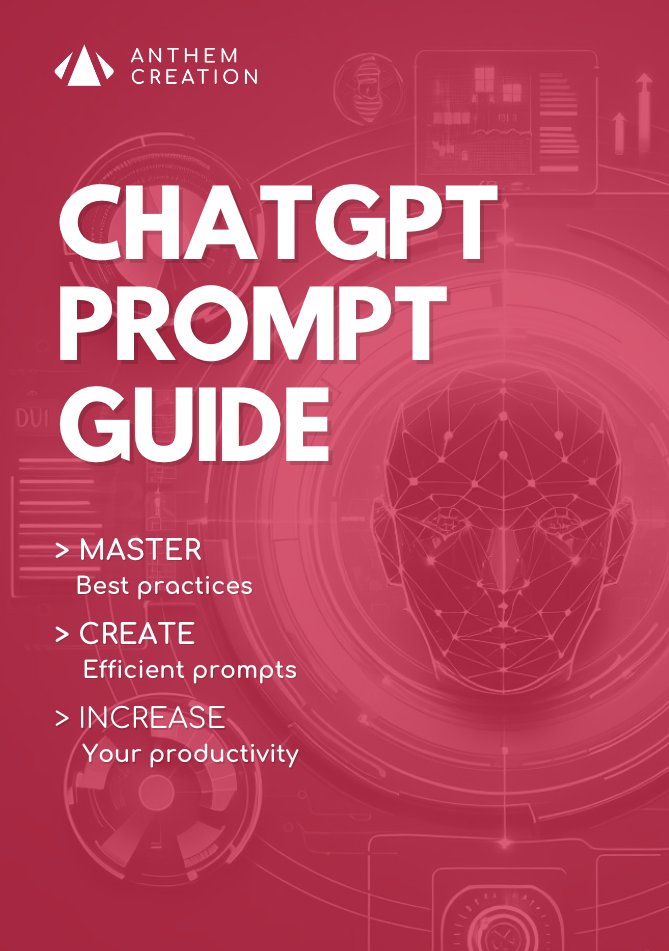
CHATGPT prompt guide (EDITION 2024)
Download our free PDF guide to crafting effective prompts with ChatGPT.
Designed for beginners, it provides you with the knowledge needed to structure your prompts and boost your productivity
With this ebook, you will:
✔ Master Best Practices
Understand how to structure your queries to get clear and precise answers.
✔ Create Effective Prompts
The rules for formulating your questions to receive the best possible responses.
✔ Boost Your Productivity
Simplify your daily tasks by leveraging ChatGPT’s features.
Similar posts
5 best AI trends in 2025 : prepare for change
Artificial intelligence is no longer just progressing – it’s fundamentally redefining our society. In 2025, we will reach a decisive milestone where AI will become deeply integrated into every aspect …
Choosing the best ChatGPT model for your projects in 2025 : Complete guide and comparison
How do you choose the model best suited to your specific needs? Between performance, cost and specialized features, this guide presents an in-depth analysis of the best ChatGPT models available …
Artificial intelligence for designers and illustrators
Generative artificial intelligence offers a panoply of tools for professional designers and illustrators. By integrating these technologies into their workflow, they can not only gain in efficiency, but also explore …
